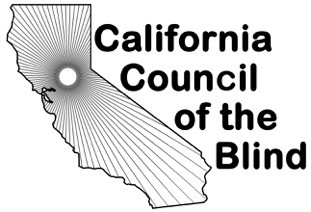by Katie Dupere
{Editor's note: This is edited from an article with lots of graphics. The link to the original article is http://mashable.com/2016/12/29/art-accessibility-blind-low-vision/#VSNdg....}
Art is a universal medium of expression, bridging gaps across language, time and culture. But galleries and museums aren't always accessible to everyone, often excluding blind people and those with low vision from truly experiencing the art world. With about 285 million blind or visually impaired people in the world, that's a sizable part of the global population being left out. But innovations—both simple and high-tech—are making the art world even more inclusive.
Many blind people and those with low vision have experienced art through audio descriptions of pieces, whether it's recorded commentary from museums or explanations from friends in real time. But this can prevent them from interpreting pieces of art for themselves. Luckily advocates have developed new solutions, creating tactile ways for art lovers to substitute touch for sight. Here are just a few ways art is becoming more accessible for blind and low-vision communities around the world.
1. 3D Printing of Fine Art
3D printing is making art more accessible by creating touchable versions of art—especially famous pieces. Blind people and those with low vision, some of whom have never viewed works like the Mona Lisa or The Scream, can now feel their way through these iconic works. One company at the forefront is 3D Photoworks, which makes tactile versions of historic paintings and modern photography through 3D printing. The pieces made by 3D Photoworks also feature sensors, which activate audio descriptions of the work as a person feels around the piece. 3D Printworks has brought its inclusive art to museums around the country, but it wants to eventually provide accessible options for art lovers who can't see in all 35,000 museums across North America.
2. Incorporating Braille Into Visual Art
Including Braille in traditional forms of art is one way to make pieces more accessible, while also celebrating Blind culture. And one particular artist has paved the way for this innovative technique. New York-based artist Roy Nachum creates what he calls "visual art for the visually impaired." His work is undeniably gorgeous at first glance, even serving as the cover art for Rihanna's album, Anti. But for those who can't see Nachum's eye-catching visuals, the art has a different layer of artistic appeal—poetic writings embossed on the artwork's surface in Braille. To highlight the tactile importance of his work, Nachum also lightly covers his art in ash, which leaves fingerprint marks on the work as a person reads the Braille messages. The prints left behind act as a type of documentation of human contact with his work. Nachum's innovative form of interactive art allows everyone to experience the same art in different—yet equally powerful—ways.
3. Extra-textured Paintings for Inclusivity
Making art more accessible to people who can't see doesn't require changing already existing pieces. Paintings, for example, can be created with this audience in mind from the start, layering paint to make it a more tactile experience. One well-known artist using this technique is John Bramblitt, who began painting after he lost his eyesight due to complications with epilepsy and Lyme disease in 2001. Bramblitt says losing his sight helped change the way he thought about art and color for the better. He often creates his pieces with thick layers of paint, appealing to touch as well as the gaze of fans who can see. Though layering paint to create more textured work is common, artists who use the technique specifically to make their art more inclusive are relatively rare. Regardless of the lack of popularity, painting with texture is a simple, low-tech way to bring art to those who can't experience it through sight.
4. Tactile Art That Welcomes Touch
We're used to hearing the phrase, "Please, don't touch the art." But California-based contemporary artist Andrew Myers creates works specifically to challenge this common, disapproving phrase. Using screws of different heights, the artist creates topographic-like portraits by inserting the screws into wooden boards, making images with the meticulous gaps and grooves. As a result, his work has mass appeal for blind people and those with low vision, who can touch his portraits. Tactile art like Myers'—which includes any art meant to be felt in order to be fully experienced—is engaging for art lovers of all visual ability. From complex pottery to plastic protruding from canvas, tactile forms of art grant a fuller experience to gallery-goers who can't see. Myers documented his work with tactile art in the documentary Please Touch the Art!, which features a blind man feeling a portrait of himself for the first time.
5. Tactile Tours of Museums and Galleries
Some major museums and smaller galleries are throwing the "look, but don't touch" mantra out the window—and it's all in the name of inclusivity. To do this, museums have begun using touch—and even smell—to give those without vision the ability to experience art. Several museums and galleries have started hosting tactile tours, which serve as ways for blind people and people with low vision to touch replicas of famous artworks. The Louvre in Paris, and the Guggenheim and the Metropolitan Museum of Art in New York, have all established tactile tours, where people can touch pieces of art or casts of famous works. The goal of these tours, one gallery curator at the Guggenheim told The Atlantic, is to allow people who are blind or have low vision to "see" with their brains, not their eyes. You can find a list of popular museums in the U.S. offering accessible programs for blind people and those with low vision by going to http://www.acb.org/adp/museums.html.


